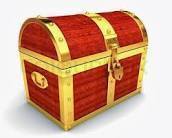Tunisia

Certainly! Here is the complete financial history report of Tunisia, translated into International English as requested:
Comprehensive Financial History Report of Tunisia
Basic Information about Tunisia
-
Official country name: Republic of Tunisia
-
Most widely used official language: Arabic
-
Country ISO code: TN
-
Current official currency: Tunisian Dinar
-
Currency ISO code: TND
Monetary History of Tunisia
Current Currency: Tunisian Dinar
-
ISO Code: TND
-
Symbol: د.ت (DT)
-
Subdivision: 1 Dinar = 1000 millimes
-
Date of introduction: 1 November 1960 (replaced the Tunisian franc)
-
Circulation period: Since 1960 to present (active)
-
Mint: National Mint of Tunisia, with occasional production in international mints
-
Issuing bank: Central Bank of Tunisia
-
Coin denominations: 1, 2, 5, 10, 20, 50, 100 millimes
-
Banknote denominations: 5, 10, 20, 30, 50, 100, 200 dinars
-
Designs and symbols:
-
Banknotes feature prominent national figures, historical landmarks, and Tunisian cultural motifs.
-
Coins bear national emblems, the country’s coat of arms, and denomination numerals.
-
-
Status: Official and actively circulating currency in Tunisia.
-
Monetary legislation: Regulated by the Central Bank of Tunisia under national currency and banking laws.
-
Additional information:
-
The Tunisian dinar follows a flexible exchange rate regime, linked to a basket of currencies.
-
Banknotes incorporate multiple security features to prevent counterfeiting.
-
Signatures on banknotes include those of the Central Bank governor and the finance minister.
-
Commemorative coins and banknotes are issued for national celebrations and special occasions.
-
Previous Currencies
-
Tunisian Franc:
-
Used prior to the introduction of the dinar in 1960.
-
Linked to the French franc during the French protectorate period.
-
Withdrawn from circulation after 1960.
-
-
Tunisian Rial:
-
An older currency used before the Tunisian franc.
-
No longer in circulation.
-
Economic and Monetary Context
-
Tunisia has a diversified economy including industry, agriculture, tourism, and services.
-
The dinar faces challenges such as inflation and exchange rate volatility influenced by domestic and international factors.
-
The Central Bank of Tunisia pursues monetary policies aimed at price stability and economic growth.
-
Recent years have seen economic reforms to enhance financial stability and attract investment.
-
The economy relies significantly on remittances, exports, and tourism.
Summary of Tunisian Currencies
| Currency | ISO Code | Symbol | Subdivision | Circulation Period | Issuing Bank | Main Denominations (coins/banknotes) | Current Status |
|---|---|---|---|---|---|---|---|
| Tunisian Dinar | TND | د.ت | 1 Dinar = 1000 millimes | Since 1960 to present | Central Bank of Tunisia | Coins: 1, 2, 5, 10, 20, 50, 100 millimes Banknotes: 5, 10, 20, 30, 50, 100, 200 dinars |
Active and official |
| Tunisian Franc | - | - | 1 Franc = 100 centimes | Until 1960 | - | - | Out of circulation |
| Tunisian Rial | - | - | - | Earlier periods | - | - | Out of circulation |
Additional Information
-
Banknotes bear signatures of the Central Bank governor and the finance minister.
-
Commemorative coins and banknotes are issued on important national anniversaries and events.
-
The Central Bank regularly updates banknotes to incorporate new security technologies.
-
Tunisia’s monetary policy focuses on inflation control and exchange rate stability.
This report provides a detailed overview of Tunisia’s financial and monetary history, highlighting the Tunisian dinar as the current official currency, its previous currencies, and the current economic context.
 Nilton Romani
Nilton Romani
